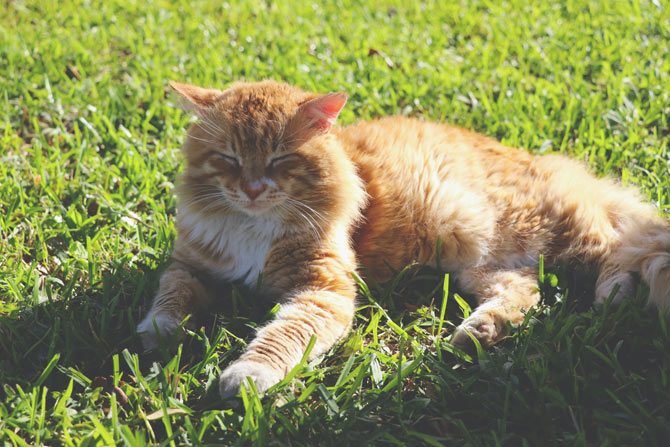Despite giving the impression of being fairly robust animals, cats can be highly susceptible to heatstroke. Furthermore, heatstroke in cats can be fatal. Thus, anyone who spends time caring for or looking after cats should be aware of the signs of heatstroke in cats and how to prevent it.
Sure, our purring pals are often found lying in the sun, but, believe it or not, they don’t tolerate heat all that well. This leaves cats at risk of heatstroke, which can be serious—even fatal!
Heatstroke in cats can cause injury to the tissues and organ failure, which can lead to death. Unfortunately, heatstroke can happen quickly, so it pays to know the common causes plus the signs to watch out for.
Causes of heatstroke in cats
Knowing the causes of heatstroke in cats can be useful for you, as a pet professional, as well as your clients—to keep their cats safe.
According to the RSPCA, the following factors increase the risk of heatstroke in cats:
- A warm, hot, humid environment with poor ventilation
- Not enough access to drinking water
- Inadequate shade
- Excessive exercise
Other factors that can increase the risk of heatstroke in cats include being overweight, the breed of cats (Persian and Himalayan cats are higher risks), as well as whether the cat has respiratory or heart issues.
Indeed, certain situations can also increase the likelihood of a cat suffering from heatstroke. For example;
- A cat that becomes trapped in a clothes dryer or washing machine;
- Being confined in any area or environment where there is inadequate shade or water;
- A cat left for a prolonged period in a car
Symptoms of heatstroke in cats
Being aware of the symptoms of heatstroke in cats can be very helpful. If you recognise the signs early on, you can ensure the cat receives immediate treatment.
According to the RSPCA, signs to look out for include the following:
- Panting which increases as heatstroke progresses
- Drooling, salivating
- Agitation, restlessness
- Very red or pale gums
- Bright red tongue
- Increased heart rate
- Breathing distress
- Vomiting Diarrhea (possibly with blood)
- Signs of mental confusion, delirium
- Dizziness, staggering
- Lethargy, weakness
- Muscle tremors
- Seizures
- Collapsing and lying down
- Little to no urine production
- Coma
How to prevent heatstroke in cats
Without a doubt, the good news is that heatstroke in cats can be prevented! Providing you know the signs and symptoms of heatstroke, as well as the difference between good and bad environmental conditions, you can help prevent heatstroke in cats in your care.
Firstly, it’s vital to ensure any cat in your care has access to shade and clean water at all times. This will help prevent dehydration and overheating—a major cause of heatstroke.
Secondly, if there are certain areas that your cat, or a cat in your care, likes to hang out— make sure these areas are well ventilated. This might mean using a fan or leaving a window ajar.
Finally, never leave a cat in a hot car and make sure you remind clients why this is important.
Worried about heatstroke?
If you think your cat or a cat in your care could be suffering from heatstroke, it’s important to take action. The following steps may help.
- Remove the cat from the hot environment
- Coax the cat to lie on a cool damp towel to help reduce their body temperature
- Use a fan to help reduce body temperature
Obviously, if you’re a vet, you have access to a range of treatments including intravenous fluids, medication and oxygen. However, if you are not a vet it is worthwhile having the cat checked out by the local vet for peace of mind.
Have you encountered a cat suffering from heatstroke? What action did you take?
Related posts:
Image source: Unsplash.com
Latest posts by Liz Walden (see all)
- Pet health: Medicinal cannabis for pets - December 27, 2021
- What pet business insurance do I need? - November 17, 2021
- Pet sitters: how to take time off - November 15, 2021










Leave A Comment